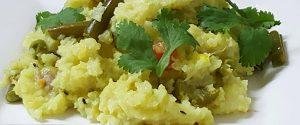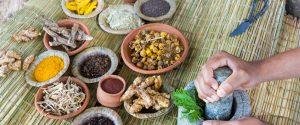Ayurveda Diet, Misinformation, Misunderstanding and Marketing Mayhem!
Ayurveda diet is the generic name given to the traditional diet of the Indian subcontinent that draws heavily from the Vedic philosophy of healing called Ayurveda.
Ayurveda diet has evolved over a millennium and is cooked from locally available seasonal fruit and vegetables, legumes, and grains. These dishes are generously spiced and flavored with local herbs and spices appropriate for the season.
The goal of Ayurvedic diet is to provide optimal nutrition to strengthen the immune response against pathogens and weather fluctuations.
Main ingredients, meal plans, and spice levels vary to follow the path of the sun, the rhythm of the seasons and solstices, quality of natural water available, and the unique requirements of the individual, his age, vocation, temperament, health needs and place in society.
Ayurvedic diet is inseparable from Ayurvedic lifestyle and healing as diet is the foundation on which all of Ayurveda healing stands strong, as a preserver and protector of those who follow the guidelines.
Ayurveda food in the West is narrowly interpreted as a few dishes from the north of India based on the knowledge shared by various popular Vaidya physicians who were pivotal in bringing Ayurveda to the West.
These Vaidya physicians naturally were from the North of India and have rightly shared the cuisine of their region to help their patients. However, this has had the unfortunate consequence of skewing the general perception about Ayurvedic diet. Ayurveda+Diet

HISTORY OF AYURVEDIC DIET
India was a mini-Europe with over 300 principalities ruled by local kings till independence from the British united them in 1949.
Each of these regions have a highly sophisticated cuisine that has been fine-tuned over hundreds of generations. Royal chefs and the Vaidya community assisted the rulers in maintaining the good health of their people. Diet was the main canvas they worked on, Ayurveda healing unequivocally holds up a wholesome diet as the centerpiece for health.
Recipes were developed as new ingredients came in from other parts of the world, as water quality was affected over the years, as the kings moved capitals, as river basins dried up, as monsoons shifted, and certain crops went in and out of popular tastes.
Recipes from ancient times are preserved in the archives found from various excavation sites, in popular literature, and in the detailed accounts of Royal houses.
REGIONAL AYURVEDIC DIET FROM INDIA
Some regions like the Maratha, Konkan, Assamese, Bengali, Delhi, Punjabi, Haryanvi, Telengana, Gujarati, Chettinad, Kerala, etc. to name a handful, continue to hold sway on the national Indian palate with their extraordinarily delicious and nourishing recipes, some of which have not changed much in a few hundred years.
Ayurvedic diet as mentioned in the classic texts of Ayurveda, still thrives in the deep South of India, especially Kerala, a region largely left unmolested by British regulations that nearly extinguished Ayurveda in the North.
Today the Vaidya community of Kerala along with the AYUSH ministry are at the forefront of reviving Ayurveda for the rest of India and the world.
AYURVEDIC CUISINE GOES GLOBAL
Coming back to Ayurvedic cuisines, wherever the ancient ambassadors of India went, whether it was for trading or for preaching new religions, they took Ayurveda healing with them to keep their community healthy and to meet the challenges of the arduous journeys across mountains and oceans.
Hindu and Buddhist monks were educated in various vidyas or sciences of their times as was required of the highly educated and accomplished.
Bhaishajya Vidya or medicinal healing was one of the many sciences a Vedic gentleman or lady was required to be proficient in.
Ayurvedic food is a term that can be applied to the ancient cuisines of countries from the Indian subcontinent, and beyond, stretching into Indonesia, Thailand, and even Japan, which were on the path of advancing Hinduism and then Buddhism.
As the highest social strata of these new worlds wholeheartedly adopted many of our ways, naturally, Ayurveda lifestyle and diet overlaid on the existing traditional food cultures and norms.
A student of Ayurveda will notice the substantive use of many spices like raw turmeric, galangal, ginger, garlic, and pepper in the cuisines of South Asia. Clinical Ayurveda also mingled with the traditional healing practices of the region giving rise to Ayurveda like therapies.
AYURVEDA, CHICKEN TIKKA MASALA & RESTAURANT CUISINE
Modern adventuresome home chefs and enterprising restaurant chefs have tweaked many of the traditional recipes of India. Immigration forced chefs to create dishes like Balti Chicken, Chicken butter masala, Paneer Butter Masala, etc. to please well traveled patrons.
These innovative dishes have gained massive following everywhere, however they have sadly become synonymous with traditional Indian Cuisine.
As chefs on social media play with fusions of exotic flavors, ingredients and cooking methods and marry East and West willy nilly, Ayurveda students are not to blame if they lump popular Indian cuisine in the ‘treat with caution’ bin.
As a simple rule, you can be sure that any recipe that was prevalent in the Indian Subcontinent till the 1960s-70s and any recipe developed by a Royal kitchen, was within the guidelines of Ayurveda.
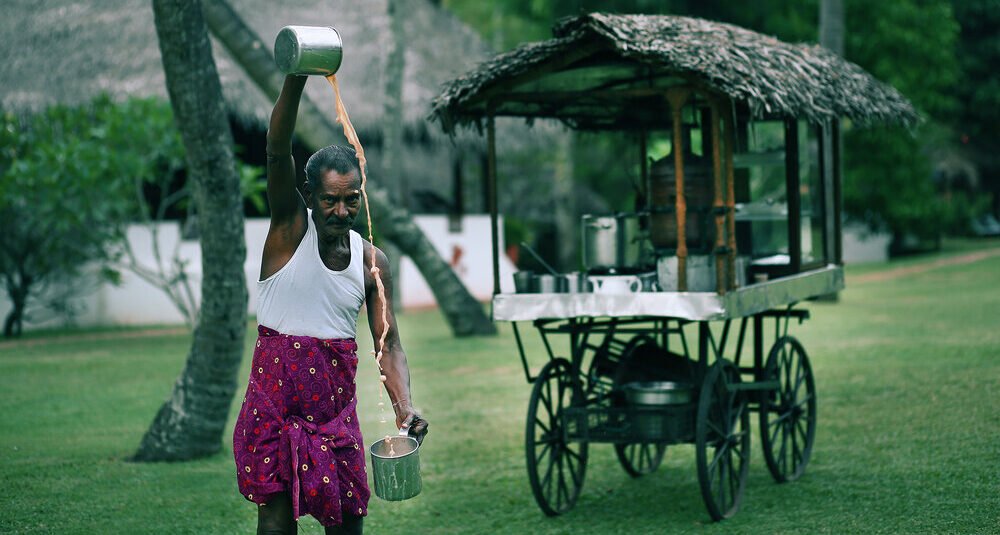
HOW TO EAT FOR MY DOSHA?
If you know your current body type, congratulations, you are way ahead of the rest of the world.
If you know your Prakriti, your body’s natural tendency to lean towards a Vata, Pitta, or Kapha dosha and you know your Vikriti, the lifestyle choices that have distorted your Prakritic dosha, welcome to the world of Ayurveda as a serious seeker.
If you understand that the bio energies of Vata, Pitta, and Kapha are constantly in flux and are brought back to balance by your food choices, your relationships, your activities, your thoughts, and exercise and therefore you do not see your body type as a fixed point value but as a dynamic ever-changing fluid concept, then you have moved into the realm of higher Ayurveda.
If you steady your energies, as you feel them rise in your body and mind, intuitively, from an intuition that arises out of a study of the good and the bad (guna/dosha) of everything you put on or put in your body or from having lived in a family that practices Ayurveda, then I celebrate you.
You get this!
To eat for your body type is like trying to lock the gates after the horse has bolted out of the barn.
Eat for the dosha of the mind, catch the dosha imbalance in your mind.
Check the state of mind, are you in a Sattvic state of calm serenity, or are you frantic, upset, and irritated by a Rajasic mind? Are your lethargic and dull with a Tamasic cloud looming over your life?
Once food is eaten as medicine to balance and bring the mind to steady serenity then apply the appropriate dinacharya and ritucharya, daily and seasonal rituals, to ease the Vata, Pitta, and Kapha dosha in the body.
THE DOSHA OF THE MIND IS THE FIRST DEFENSE AGAINST ILL HEALTH
Here is Dr. K R Srikanthamurthy’s explanation of the three Maha Gunas of the mind:
According to the Upanishads, everything in this universe is said to consist of the three Maha Gunas – the Sattva, Rajas, and Tamas.
Sattva represents intelligence, joy, enthusiasm, purity and so it is good and benevolent; Rajas represents activity, emotions, force, energy, quickness, and instability; Tamas stands for inactivity, ignorance, mass, laziness, and stability.
These properties are present in all the things of the world in varying proportions.
As applied to the functions of the mind, Sattva guna, when predominant gives rise to great intelligence, joy, enthusiasm, purity of thought, and actions. Persons endowed with such qualities will be good in all respects.
They are moral, polite, active, intelligent, joyous, and always think good and do good to all. Hence, sattva guna and persons are the ideal and considered as healthy.
Rajas, when predominant gives rise to over-activity, instability, haste, emotions like anger, bravery, passion, and attachment; persons of Rajo guna will be very emotional, highly irritable get into fits of anger and violence most of the time; they are dreaded and hated by others.
Tamas, when predominant gives rise to ignorance, Jack of enthusiasm, grief: timidity, laziness, and inactivity. Persons of Tamo guna, will be slow in all activities, foolish, dull, timid, grief-stricken, worried, and sleepy.
The literature of the concept of Maha Gunas of Rajas, Tamas, and Sattva, as applied to Ayurveda diet, is as varied as the people who have left their words behind.
AYURVEDIC DIET OF THE YOGIS
Yogis will usually apply the definition of the mind to the definition of food – Sattva creates happiness, Rajasic diet creates instability and that Tamasic diet creates lethargy.
Food historians like Dr. Pushpesh Pant have likened the Gunas to Vata, Pitta, and Kapha inducing qualities – the quality of lightness of body (Vata), the quality of heat, and action (Pitta) and the quality of bulk (Kapha).
I believe that both are true at the same time. The Yogis focus on what to eliminate from their diet to help achieve enlightenment. The Vaidya are keen to understand the negative aspects of a Sattvic, Rajasic, and Tamasic diet to assist with their diagnoses. Householders who cook for their families focus on the lightness, energy and bulk building qualities of a Sattvic, Rajasic, and Tamasic meal.
Please note here all terms like Vata, Pitta, Kapha, Rajas, Tamas, etc. are either a ‘Guna’, when it is a desirable quality, and a ‘Dosha’ imbalance, when harmful.
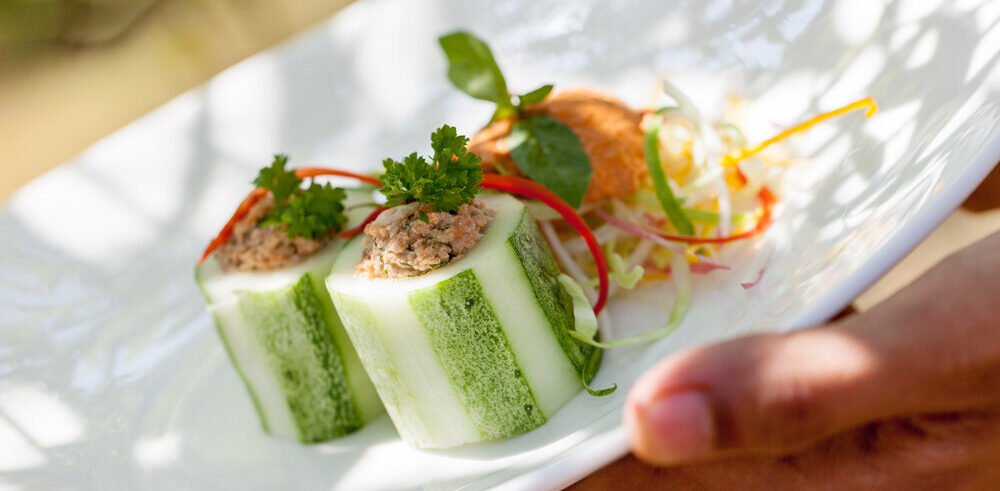
WHAT IS SATTVIC DIET?
This is a balanced diet made from wholesome ingredients, fresh fruit and vegetables free from chemicals and pesticides. Such a diet can be from any cuisine of the world and has adequate protein and fats to meet your daily energy requirements.
A small quantity provides the nourishment needed for a Yogi, a student, or someone who uses their brain power for deep abstract thinking.
WHAT IS RAJASIC DIET?
A rajasic diet from India will additionally have a lot of spices and flavors, meats, and fish. This is the diet of warriors and leaders, people who need a steady stream of energy to think and to act with their bodies.
If you are at an Ayurveda retreat you will not be eating such a meal as you are only required to do light walking, gentle yoga, and meditation.
WHAT IS TAMASIC DIET?
This is the heaviest, bulk-building earthy diet for the hardest working people of the planet.
The purpose of this diet is not to hone the subtle intelligence required for study or the penetrating intelligence of a leader to make important decisions, such a diet much chiefly satisfy the steady high energy required for long periods of activities like farming, fishing, exercising and construction and with the expansive intelligence required to become skilled at such work.
The people who raise our crops are as valuable as the Yogis and CEOs of the world.
WHAT IS THE CLASSIC AYURVEDIC DIET?
An Ayurvedic classic textbook like the Charaka Samhita, the Sushruta Samhita, or the Ashtanga Hridaya does not give details of diet and recipes.
These volumes are physicians’ manuals with succinctly composed verses on helpful guidelines during the shift of the seasons when Vata, Pitta, and Kapha tend to fluctuate and flare.
Throughout the Ayurveda classics, instructions like ‘hita mitahara’ or eat a small quantity of lovingly cooked food are sprinkled to improve understanding.
The classic gives the detailed Gunas, qualities, and dosha, negative imbalances of various foods that were prevalent during their time like dates, jaggery, various types of grains, meats, yogurt, oils for cooking, kinds of milk of different animals, fishes, spices, etc.
Most of these ingredients are not used anymore except for foods like banana, jaggery, ghee, sesame oil, turmeric, asafetida, cumin, fennel, jackfruit, coconut, etc to name a few.
For example, under Annaswarupa Vijnaniya Adhyaya, the chapter on food, verses 184-188, Acharya Vagbhata says:
“Bala Amra (tender, unripe mango) is astringent, bitter and sour, non-unctuous, increases Vata, rakta, and pitta) Apurna Amra (half-ripened mango) is sour, increases rakta, pitta, and Kapha; Paryagata amra (well-ripened mango fruit) is sweet and sour, hard to digest, unctuous, mitigates Vata, does not increase pitta, good for the heart (or the mind), increases Kapha, muscles, and semen and gives strength; Sahakara rasa (mango juice processed with honey, sugar, etc) is good for the heart or the mind, has a pleasant smell, unctuous, improves taste and digestion, mitigates pitta and Vata and purifies the semen and blood.”
The classics give warnings of cooking some foods or mixing certain foods that might cause, Ama, endogenous toxins produced as a byproduct of insufficient digestion.
The bulk of the knowledge of the Gunas, the prabhava, the vipaka, the effect of food and ingredients, is the unwritten knowledge passed down to families and communities through mothers and grandmothers.

AHARA AND VIRUDDHARA – WHAT ARE INCOMPATIBLE COMBINATIONS IN AYURVEDA FOOD?
Chapter 9 of Ashtanga Sanghraha, Viruddha Vijnananeeya Adhyaya gives a detailed account of incompatible foods. Other classics certainly may have additions to this list.
Unwholesome and incompatible foods cause Ama Visha, endogenous toxin build up in the body and are to be avoided to stay healthy, especially during cusps of seasonal and solstice changes.
This list is not complete as I have eliminated many of the foods we do not have access to like wild varieties of jackfruit, game meat, and grains that are extinct.
· The meats of domestic animals and fish should not be eaten along with honey, jaggery, sesame, milk, black gram (urad in Hindi), radish, lotus stems and germinated grains
· Milk along with fish is especially Ama Visha causing.
· All sour things mixed with milk become incompatible.
· Milk with lentils like horse gram and black gram.
· Milk should not be had immediately after eating leafy vegetables, this leads to skin disease.
· Meat of chicken and venison should not be cooked along with yoghurt.
· Milk and salt should not be mixed.
· Soup of black gram and radish.
· Green leafy vegetables cooked with butter.
· Fruits of acidic nature eaten along with yogurt, soup of black gram, jaggery, honey, or ghee.
· Banana combined with yogurt and buttermilk.
· Ghee which has been kept for more than ten days in a bronze vessel.
· Heating wines, yogurt, and honey causes dangerous Ama Visha build up.
· Honey, ghee, animal fat, sesame oil and water mixed in equal quantities, in the combination of two, three or all of them are incompatible and even lead to death.
· Haridraka, raw turmeric, cooked in mustard oil is incompatible and causes a profound increase of Pitta.
· Indian milk and rice pudding, kheer, followed by floury and sugary desserts is incompatible and causes a profound increase of Kapha.
WHO IS SAFE FROM INCOMPATIBLE FOODS?
Based on the classics, “Viruddhahara, incompatible foods, do not cause harm to persons who are active and exercise daily. Those who also do Abhyanga and Nasya oiling daily, who have powerful digestive capacity, who are neither too young nor too aged and are of strong constitution do not get affected by Ama Visha of viruddhahara.
Similarly, foods that one has grown up eating and has become accustomed to and food that is eaten in small quantities do not cause trouble even though such food may be made with incompatible Ingredients. Such adaptation is called oka satmya.
The use of yogurt and milk together does not always become incompatible depending on the additional ingredients.”
BUT SOME INDIAN RECIPES DO NOT FOLLOW THESE RULES…
There are several special ancient recipes from India which do use yogurt and milk with fish and meat, they are made in a precise manner, and the recipe must not be altered without understanding why.
Some examples are Doi Mach, steamed fish with yogurt, and mustard paste from Bengal. Lal Maas, milk cooked down with marinated meat till it turns to fudge from Rajasthan, various lentil curries as cooked by the brahmins of Himachal using yogurt with lentils, cooked down over an open fire for several hours.
Most of the yogurt used in Indian cuisine is used in the form of hung yogurt for marinating meats or churned with water to make buttermilk.
Both these forms are distinct from plain set Yogurt used as-is. Churning and removing whey changes the heating and harmful quality of yogurt.
For example, Yakhni soups from Kashmir, buttermilk Kadi from Punjab and Gujarat, regional recipes of lassis, and takram drinks from all over India for cooling the body when summer is at its peak.
You may have tasted a mango lassi in an Indian restaurant for sure, this is a nourishing aphrodisiac recipe if made from natural mango and churned Yogurt.
If you are from Korea or Japan you will notice the heavy use of radishes with fish, these foods work for those who have had this combination over generations and have developed oka satmya, adaptation over generations.
The Ayurveda Acharyas in their classics give room for those who are of regions outside of India and have developed their cuisine over generations.
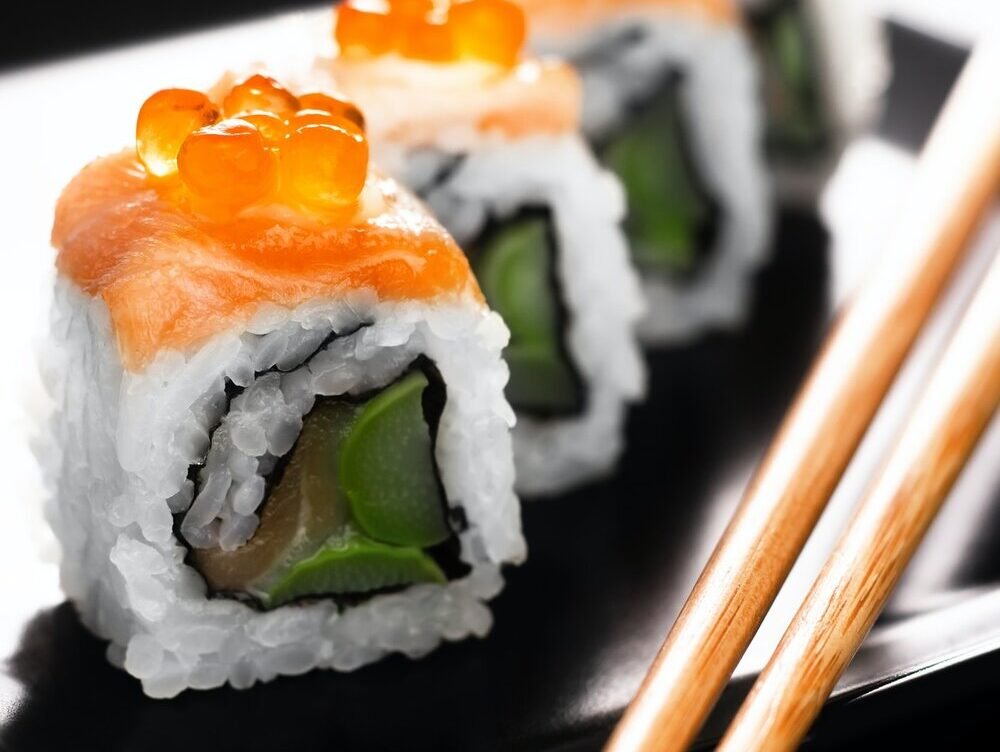
ARE TOMATOES, EGGPLANTS, CHILIES, TEA, COCOA, AND COFFEE AYURVEDIC?
Food has become an obsession in the modern world, as we slice and dice new data and follow every fad that comes in. It is dizzying to keep up.
Tomatoes, Eggplants, and Chilies do not need cheerleaders to convince us of their benefits. Tea, Cocoa, and Coffee, consumed by the indigenous people of the regions where these crops grow in plenty, attest to the numerous health benefits of these beverages when consumed in moderate quantities without sugar and additives.
When these crops were given to Indian Royal houses as gifts by visiting Portuguese explorers, they went straight to the Vaidyas, the horticulturists, and the chefs of the royal houses. Nothing ever gets put on the Indian table without our Vaidya’s approval.
The adventurous Vaidyas studied the vipaka, prabhava and guna, found ways to cook these vegetables to bring out their flavors and since then Indian homes have embraced these gifts of the New World.
Tomatoes are an important part of our curry bases, there are few curries without tomatoes and chilies.
Eggplant, also called aubergine or brinjal, is a beloved accompaniment on the Eastern coast of India, all the way from Chennai to Assam. Baghare Baingan is a famous dish from the Hyderabad Royal house. Bengalis cannot eat a meal without their Begun bhaja, simple salted panfried brinjals in mustard oil with turmeric.
India runs on shots of spicy chai and South India is powered by meter Kapi served in silver tumblers in our Royal homes.
Even though cocoa was marketed by chocolate companies and was looked down upon due to high sugar content, Indians do not so easily give up their traditional sweets that are rich with sugar, ghee, lentil flours, and milk.
The food of the people is different from the food of the Yogis, and those who wish to cultivate sensitive nervous systems with a goal of enlightenment should avoid garlic, onions, tea, coffee, chilies, and asafetida.
Our food choices should be determined by the intelligence we wish to access and the needs of our bodies. By fine-tuning our intuitive faculties and connecting to our gut’s intelligence, we develop the ability to eat based on Sattvic cravings.
If you have any allergies please respect your body’s limitation.
PRANIC QUALITIES OF VEGETABLES AND FRUIT
Yogis categorize food depending on the energy that is required to digest the food and also its subtle effect on the mind-body and energy field.
The categories are negative pranic, positive pranic, and neutral pranic.
Some negative pranic foods are chilli peppers, onions, garlic, tea, coffee, meats and poultry.
Positive pranic foods are gourds and pumpkins, lotus stems and seeds, moong dal, milk, ghee, honey, spices like asafoetida, turmeric, pepper etc.
Now, most Yogis, ideally, live on meagre meals perhaps no more than twice a day. And if their body is using far more energy to digest then they cannot perform the hours of Yoga sadhana to reach the final summit of Samadhi.
A mountaineer getting ready to climb Mount Everest will leave behind all that is unnecessary and harmful to his mission. He/She will pare down his baggage and tools to the bare essentials to keep life in till she gets to her goal. So does the Yogi.
Think of negative pranic foods as liabilities on the Yogi’s quest, the fourth state of enlightenment, the ultimate Turiya.
Just as a spacecraft hurtling through Space to escape gravity can be hindered and crashed by a particle of dust flying towards it and needs protective measures, a Yogi of the highest calibre eliminates all superficial energy draining food and activities from their life.
The vast majority of us do not need these extreme limiting diets unless you enjoyed the discipline.
If you are indeed a Turiya seeking Yogi, then you do not need guidance on what to eliminate and what to eat more of, your intelligence will be your best guide.
HOW CAN L LOSE WEIGHT WITH AYURVEDA?
If you follow an Ayurveda guided lifestyle and diet, you will see significant improvement in health.
An Ayurveda diet in today’s context is any diet from any region prior to the 1970s for Asia and the 1900s for the western world.
This was the diet before industrialization threw out healthy food and mothers from our kitchens.
The nouvelle cuisine that grand chefs like Marie-Antoine Carême and Auguste Escoffier pioneered during the Victorian era was a departure from the nourishing cuisine of mothers and grandmothers, the earthy fare of the simple folks, the peasants, and the fishermen.
Victorian chefs cooked to impress the richest of Europe!
Cuisine Nouvelle diverged from the simple to the elaborate, to heavy use of the fanciest cuts as opposed to the organ meats of the common people, light emulsions of cream-based sauces to suit the delicate palates of the refined instead of the garlicky hearty stews of the taverns and pubs. Modern chefs still cook these recipes as heights of creative culinary expression and indeed, these Victorian chefs were geniuses in reinterpreting food and flavors.
This cuisine percolated down to the masses who wanted to emulate the lifestyle of the fancy. Cookbooks and food manufacturers mushroomed to meet this demand and such food has become commonplace today.
Luckily many well-known chefs have also revived time-tested ‘rustic’ cuisine of their people, reintroducing hearty meals to an appreciative audience worldwide.
Sourcing pre-industrial recipes that work for our body type from any region of the world, will help reduce inflammation in the body, will help ease gastric trouble and will cut down chemicals and sugars that cause dis-ease.
Focus on cooking an entire meal and not just a dish, traditional meals are composed to be nutritionally complete and satisfying.
To see lasting change, an Ayurvedic lifestyle must also be followed, not just diet tweaked for a short while.
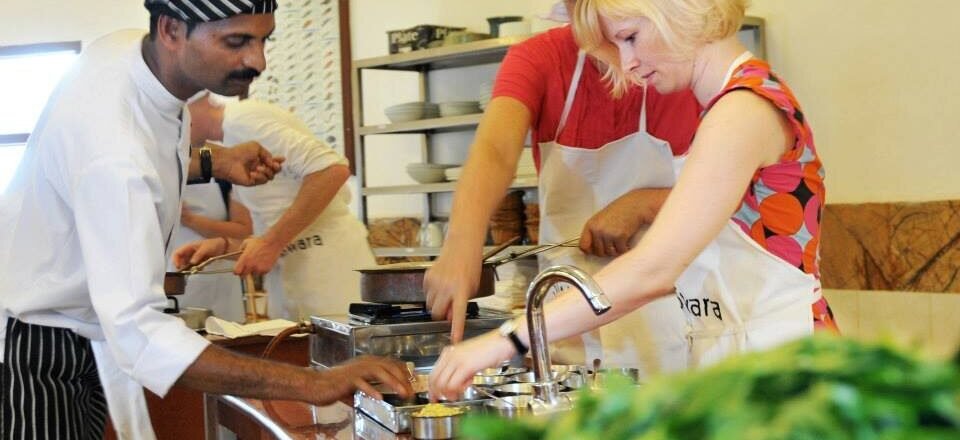
WHAT IS AYURVEDIC DIET IN TODAY’S CONTEXT?
Here are some questions I ask myself before I cook a meal, you may find these helpful to begin your journey:
- How far did this food travel? The fewer miles the food has traveled the healthier it is.
- How easily will this wash off my plate? Some of my Ayurvedic recipes clean my plate as they wash off, these are detoxing meals.
- How many people stand between me and this produce in my hand? The fewer people, the healthier the food.
- Was this food plucked in it’s prime? It is an essential life skill to tell good produce from the bad. Some foods like bananas get more nutritious as it develops dark spots, but most fruit and vegetables degrade in quality over time.
- Is this food seasonal? For this reason, I try my bestest to buy from farmers’ markets. Seasonal produce contains vital nutrients to naturally pacify Vata, Pitta, and Kapha as they are thrown out of balance during the cusp of seasons.
- Have I added the right spices to balance the Vata, Pitta, and Kapha of the environment, meaning the dryness, heat, and humidity of the climate I am in? for example, I will start to use coconut oil and coconut milk in summers and I will use heavy spices like black cardamom, cinnamon, and mace in winters to keep my body warm. When rains come, I will use bitter spices like fenugreek and black seeds, caroms, and black cumin. During dry seasons I will use more cooling barley, fresh juices, and add ghee to my daily diet.
- Does my meal contain all the six tastes – sweet, bitter, salty, spicy, astringent, sour? A complete Sattvic meal tickles all the taste buds. Sweet does not just mean dessert, it also means fruit, grains, and fresh cheeses. Bitter vegetables are like bitter gourd and dandelion. Astringent are vegetables like broccoli, chard, kale, and raw plantain.
Since my genes are of the Indian subcontinent, I take the precautions mentioned in the classics seriously.
Ayurveda diet is like a watercolor wash, the same color is applied wash after wash to create a vibrant painting. In the same way, similar foods must be eaten day after day in your favorite way for your body to get good at extracting every bit of nutrition.
And yes, as the season’s change and our wardrobe changes, the farm-fresh produce changes, and the recipes must also change.
Of course, there is ample room to play and have fun with other cuisines, as long as the bulk of our diet comes from the geographic region of our ancestry and is aligned to the seasons of where we live, we will continue to work with our body type’s inherent limitations.
It is smarter to cook coastal South Indian from your favorite cookbook when the weather is hot and humid in your region and not when there is 4 feet of snow outside.
Before adopting a new diet, Ayurveda advises that foods be added gradually by 1/16ths of an existing diet. A sudden change from one diet to another will throw the Vata, Pitta, Kapha energies off.
As you set out to try the Ayurvedic way of cooking, you will notice it is in tune with your intuition and healthy cravings.
Please also consider your genetics before testing out recipes and following these guidelines. Let me know what you discover. Happy cooking!
Don’t forget to sign up for my newsletter if you wish to be notified when I post a new blog.
Stay in touch over Instagram, love to answer any questions you may have.

